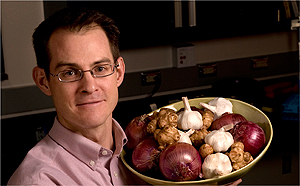INGREDIENTS
-
224 grams Raw, unsalted walnuts (8 ounces, or roughly 75 walnut halves)
EQUIPMENT
- Oven at low temperature, or a food dehydrator
- Something to drain the walnuts in, or else some clean towels you can spread them on
DIRECTIONS
- Pour a bag of walnuts in a bowl, fill it with water, then pour out the water. Do this two or three times, until the water’s getting clearer (These are walnuts, so the water will never get completely clear)
- Let the walnuts sit in a draining gadget that allows most of the water to drip out, so the walnuts dry a little and at the least are no longer drippy wet (5 – 30 minutes is about right)
- Place the soaked walnuts in roughly 1 layer on a baking sheet. If you’ve soaked a large number of walnuts, place them on extra baking sheets, and try to approximate roughly 1 layer deep
- Put the baking sheets in the oven on low heat. 170’s a nice low heat and takes a leisurely afternoon, or possibly a whole work day while you’re away. Though if you’re in a hurry, a couple of hours at 250 F also works
- Remove the walnuts before they’re noticeably browner; ideally they should be crisped and slightly sweeter tasting when you take them out. Neither soggy nor burnt.
- Store out in a bowl for snacking, or put them away in a nondescript place where they won’t be nibbled to nothing before you need them.
YIELDS 8 Servings (14 grams per serving, or roughly 14 Walnut halves)
-
Fat – 88.1%; Protein – 10.1%; Carbs – 8.1%
-
Grams per serving: Fat – 18 grams; Protein – 4 grams; Carbs – 4 grams
-
Calories per serving: 55
COMMENTS
Walnuts are a high fat food with enough protein and carbs to make a sort of snacky meal unto themselves . . . in moderation. After all, a couple of fistfuls of these nuts and you’d be past the serving size we’ve listed here (we’ve arbitrarily picked a serving size of 1 ounce, which is roughly 14 walnut halves. It’s good to keep their nutrient density in mind if you’re someone who eats a whole bunch of nuts sometimes. You see, while fat doesn’t raise blood sugars, too much of anything all at once can be hard on the body. Meanwhile, in excess both carbs and protein in walnuts raise to high enough levels that they CAN increase blood sugars . . . and since there’s a lot of fat on board, the effect can be further out in the day, when you’re less likely to make a connection to it. So if you ever munch and munch on nuts then check your blood sugars a few hours later (or even the next morning) and find they’re mysteriously climbing high, then do some basic math and see how much this “high fat, low carb” snack actually sneaks in a lot of carbs if you’ve been sneaking in a lot of nuts. Huh, you might say after knowing this. So it’s not just a random thing that makes blood sugars rise “mysteriously” when you’re being nutty.
Here I am, a fan of nuts, yet I’m warning you about nuts. Well, here’s another warning. After eating nuts, brush your teeth. Sure, they’re not sticky cavity causers the way that breakfast cereal or crackers are cavity promoters. Those starchy foods that stick to the teeth are manna to your mouth bacteria. Sticky starches and sugars can cause a bunch of tartar and tooth decay. But while nuts aren’t really sticky, they can be kind of gummy after you chew them, creating similar inviting bacterial booths. So brush, brush, brush, brush, brush . . .
Now that those health admonitions are out of my system, here’s the reason that you might want to soak and dehydrate walnuts. Unless they’re fresh-picked or purchased fresh at a California farmer’s market by my sister, walnuts tend to taste somewhat bitter–basically, like “tannin,” which is the stuff that makes black tea so bracing to drink, but which, over time, becomes an unpleasant bitterness. In walnuts, that bitterness can become just about as bad as if you had to chew on old used tea bags as part of some awful gourmet punishment. Soaking and dehydrating wash out walnut’s bitter flavor. This may also remove some anti-nutrients in the walnuts, so this also a good trick to use if a friend tends to get cancer sores after eating nuts. Soaking and dehydrating them can sometimes eliminate this unpleasant effect. However, if you or someone you know gets severe reactions to nuts, do NOT assume that soaking and deyhdrating will prevent your scary reactions. But for those with mild walnut issues, try taking a tiny little nibble.
Oh, allright, one more caution. When you’re soaking walnuts, it’s probably better to get the soaking done and move on to the dehydrating within an hour. If the walnuts hang out in the water half the day or overnight, I don’t know that it makes all that much difference in their taste or digestibility. This extra soaking may simply increase how much time it will require to dehydrate them. And if soaking’s done extensively long, long, long, it may increase the chance that the walnuts will get a bit fungusy. After all, walnuts are a real food, and we humans aren’t the only ones that want to eat them.
Let’s end on a happier note. Soaked, dehydrated walnuts really are more delicious. This process gently reveals their most subtle and exquisite flavors, and means that once your taste buds have gotten over sugar and food additive addictions, often you don’t need to salt the nuts to enjoy their flavor. You can leave a salt shaker out for friends (and those with the most numbed taste buds will probably reach for the salt shaker automatically, before they’ve even tasted anything!) But for you, experiment with how much flavor you can notice with these dehydrated nuts in their most basic fashion.
Note that dehydrated nuts are a great ingredient for pestos, such as Roasted Red Pepper Pesto.





